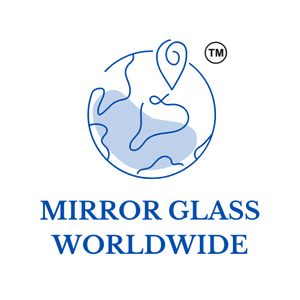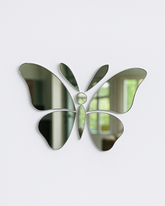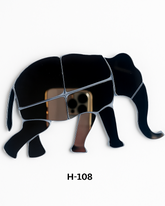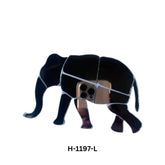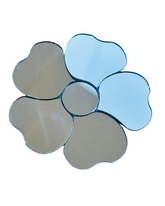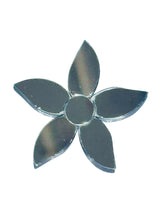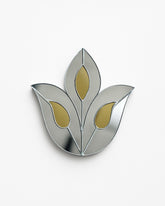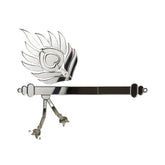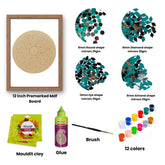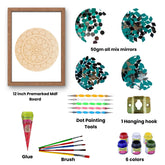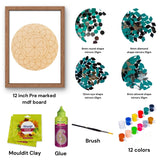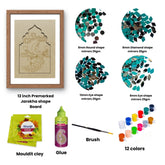Categories and Types of Lippan Art: Exploring the Beauty of Mud and Mirror Work
The Magic of Lippan Art
Lippan art, also known as Mud and Mirror Work, is one of the most captivating traditional crafts of India. Originating in the Kutch region of Gujarat, this folk art form uses a combination of mud, clay, and mirrors to create stunning wall decorations.
Traditionally, Lippan art adorned the walls of rural houses, temples, and community spaces. Today, it has become a global trend in home décor, wall art, and DIY projects. With the rise of premarked MDF boards, fancy mirrors, and craft kits, this art has adapted to modern lifestyles without losing its traditional essence.
In this blog, we’ll explore the categories and different types of Lippan art, their applications, and why they continue to attract artists, designers, and décor enthusiasts worldwide.
Categories of Lippan Art
Lippan art can be divided into several categories based on medium, style, purpose, and materials used.
Traditional Mud Lippan Art
-
Made with natural clay, camel dung, and small mirrors.
-
Still practiced in rural Gujarat, especially by women artisans.
-
Designs often include geometric patterns, flowers, peacocks, and religious motifs.
-
Used to decorate walls, temples, and traditional houses.
Modern Lippan Wall Art
-
Uses ready-made MDF boards, Fevicryl clay, and fancy mirrors.
-
Designs are premarked for precision.
-
Available as framed wall hangings, panels, and decorative pieces.
-
Popular for urban homes, offices, and restaurants.
Festival & Mandap Lippan Art
-
Specially designed for Ganpati mandap, Navratri stages, and Diwali decoration.
-
Uses lotus, peacock, elephant, and kalash shapes with mirrors.
-
Can be temporary (on MDF panels) or permanent (on plywood or walls).
Lippan Art on MDF Boards
-
A modern category using pre-marked MDF bases.
-
Artists can decorate with clay, colors, and mirror kits.
-
Includes round, square, lotus, jharokha, and rangoli shapes.
-
Easy for beginners and widely used in DIY kits.
Mirror-Only Lippan Art
-
Focuses on fancy shape mirrors without clay.
-
Uses lotus mirrors, peacocks, elephants, butterflies, bamboo trees, and geometric shapes.
-
Gives a minimalist yet festive look for walls and mandap decoration.
Lippan Art Mandala Fusion
-
Combines Mandala patterns with Lippan-style mirrors.
-
Typically created on round MDF boards.
Lippan Art for Kids
-
Special MDF cutouts in cartoon and fun shapes like Doraemon, Motu-Patlu, Hanumanji, and Astronaut.
-
Kid-friendly DIY kits with colors, brushes, and mirrors.
-
Encourages creativity and reduces screen time.
Contemporary Lippan Installations
-
Large-scale wall panels for hotels, restaurants, and galleries.
-
Uses 3D MDF cutouts, layered designs, and metallic mirrors.
-
Often customized as per interior themes.
Different Types of Lippan Art by Shape & Style
Round Lippan Art
-
Perfect for mandala and rangoli-style designs.
-
Common sizes: 12 inch, 16 inch, 20 inch.
Square & Rectangle Lippan Art
-
Best for framed wall décor and panel designs.
-
Often used in restaurants, offices, and home walls.
Jharokha-Shaped Lippan Art
-
Inspired by Rajasthani palace windows.
-
Popular in ethnic home décor and temple backdrops.
Lotus Lippan Art
-
A spiritual design used in Ganpati mandap and pooja décor.
Peacock & Elephant Lippan Art
-
Animal-inspired cutouts with mirrors and clay.
-
Highly popular for festivals and luxury décor.
Rangoli Lippan Art
-
Decorative rangoli MDF boards for Diwali and weddings.
-
Reusable alternative to powder rangolis.
Materials Used in Lippan Art
-
Clay / Mouldit – Base material for creating designs.
-
Mirrors – Silver, golden, and acrylic fancy mirrors.
-
MDF Boards – Pre-marked boards for modern designs.
-
Colors & Brushes – Fevicryl paints widely used.
-
Glue – Strong adhesives to fix mirrors and clay.
Conclusion: One Art, Many Forms
Lippan art has traveled from mud walls of Kutch to modern MDF boards in homes across the world. The categories and types of this art—whether traditional mud work, premarked MDF boards, fan
